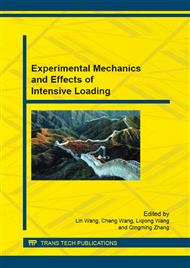p.177
p.183
p.197
p.204
p.210
p.219
p.227
p.237
p.245
The Dynamic Behavior of High Speed Train Using Magnetorheological Technology on the Curve Track
Abstract:
The era of high speed railway has come and the most important issue of the high speed train is the safety, which is directly related to billions of families. One of the most serious threats to the safety of the high speed train is the vibration of train body at curve track, which may cause the train off the track. Semi-active vibration control method is a possible solution compared with active control method which has robust problem and passive control method which has efficiency issue. Magnetorheological technology is a typical semi-active vibration control method which has been widely used in the automobile, architectural construction and aerospace. The high speed train using magnetorheological technology has not been fully investigated especially for the dynamic performance at curve track. In this paper, a high-speed train model with MRF dampers is simulated by a combined ADAMS and MATLAB simulation. The dynamic performance of high speed train operating at different speeds and turning radius is investigated to reveal the mechanism of how the MRF damper affects the train’s stability and vibration. The results show that the semi-active suspension installed with MRF dampers substantially improves the stability and dynamic performance of the train at curve track.
Info:
Periodical:
Pages:
210-218
Citation:
Online since:
August 2015
Authors:
Price:
Сopyright:
© 2015 Trans Tech Publications Ltd. All Rights Reserved
Share:
Citation:


